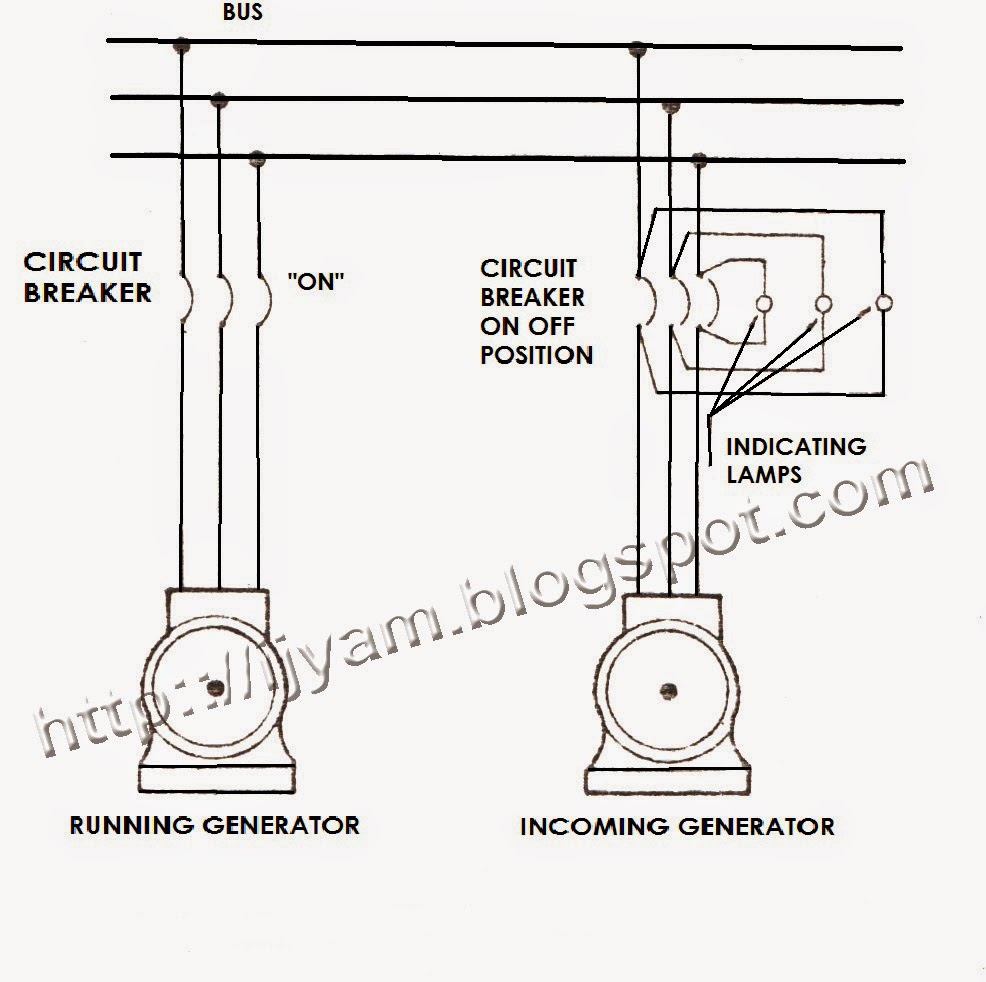1) If the load of a single generator becomes too large that its rating is exceeded, it is necessary to add another generator in parallel to increase the power available from the power station. Before attempting to connect AC generator in parallel, the following conditions must be met:
1-1) The voltages of the alternators must be in phase.
1-2) The terminal voltage of the generators should be equal.
1-3) Their frequencies must be equal.
2) When two or more generators are operating in parallel where they satisfy the three requirements mentioned in item 1 above, they are said to be in synchronism. The operation in getting these machines into synchronism is called synchronizing. For clarity in the following discussions, it is assumed that one generator is running and another one to be synchronized will be called the incoming generator.
3) There are several methods of synchronizing alternators. The most common methods are by the use of bright lamp or dark lamp method and the other one is by the use of a synchroscope. The following are the stages or procedures to be followed in operating two or more alternators in parallel:
3-1) The initial step to be taken before attempting to synchronize two or more polyphase AC generators is to phase-out the leads of these alternators. Phasing-out means that the leads of the incoming AC generator will be connected to the corresponding lead of the other generator. When this is not done the generator will be damaged because of interchange of current during their operation. Figure 1 illustrates the connections to be used in phasing out two three phase alternators.
 |
| Figure 1: Phasing-out of two three phase alternator. |
3-2) The next step now is to adjust the voltage adjustment control of the incoming generator until its panel voltmeter registers an identical voltage with the running generator.
3-3) The third step now is to have the frequency of the incoming generator adjusted so that it would be the same as that of the running generator. This is done by raising and lowering the frequency of the incoming machine. If the dark lamp method is used (See Figure 2), engage the switch of the synchronizing lamps and wait until the lamps are dark; then, while the lamps are still dark, close the circuit breaker of the incoming generator. The incoming generator is now "on line" or in parallel with the running unit.
If the bright lamp connection is used, raise and lower the frequency of the incoming unit until the lamps are on their brightest, then close the circuit breaker of the incoming set.
 |
| Figure 2: Synchronizing two AC generators using the dark lamp method. |
 |
| Figure 3: A Synchroscope. |
To divide the ampere load correctly, turn the voltage control rheostat clockwise on the unit showing less than its load share on the AC ammeter and turn the voltage control rheostat counterclockwise on the other unit until the proper load division is indicated.
CAUTION: If when switching the synchronizing lights you noticed that the synchronizing lights are alternately blinking, be very careful, DO NOT CLOSE the circuit breaker of the incoming generator. This indicates that the lines are not in-phase (refer to 3-1).


No comments :
Post a Comment
Leave a comment!
Add your comment below: